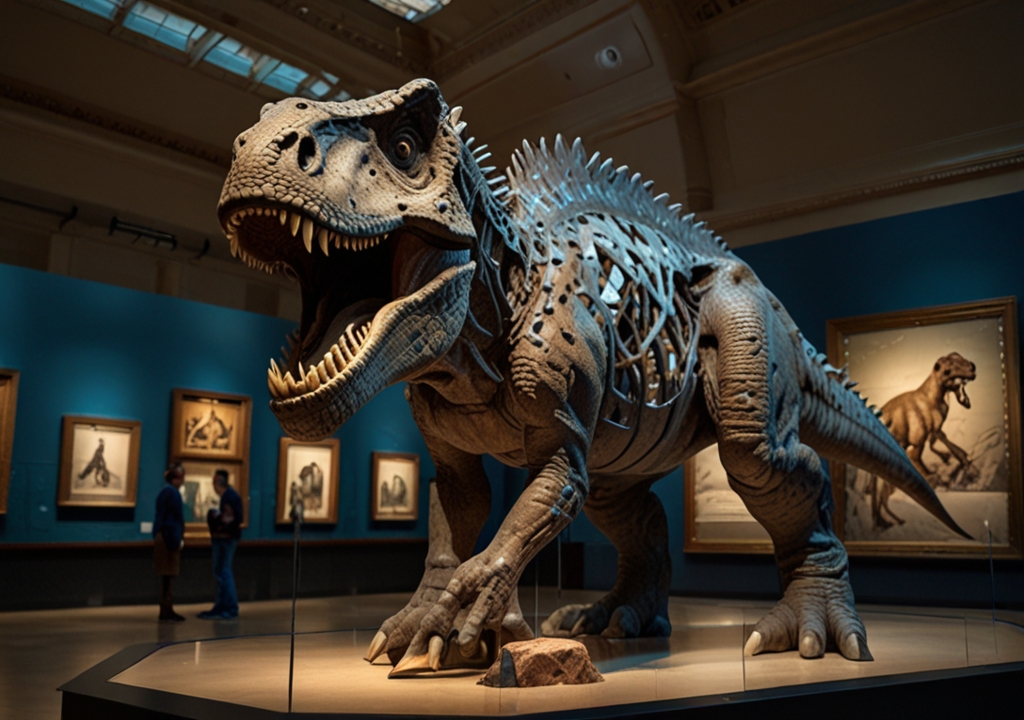Ddream up standing beneath a 94-foot blue whale model, suspended mid-air as if swimming through the ocean. This isn’t a scene from a sci-fi movie—it’s the American Museum of Natural History. Since 1869, this Manhattan landmark has been a portal to the cosmos, offering everything from dinosaur fossils to gemstones that’d make Gollum jealous. But beyond its Instagram-famous dioramas lies a world of cutting-edge science, cosmic quests, and stories that’ll make you rethink what museums can do.
Why This Museum Isn’t Your Grade School Field Trip Anymore
The American Museum of Natural History (AMNH) is like a TARDIS—bigger on the inside. With 21 interconnected buildings and 45 permanent halls, it’s a labyrinth of wonders. But here’s the kicker: less than 1% of its 34 million specimens are on display. The rest? Fueling discoveries about black holes, mass extinctions, and even your DNA.
From Gilded Age Cabinets to Cosmic Domes: A Timeline of AMNH
The 1874 “Secret” Wing
Built when Central Park was still muddy fields, the original Victorian Gothic building hid a controversial treasure: human evolution exhibits. Cue 19th-century gasps!
Milestones Table
| Year | Game-Changer |
|---|---|
| 1935 | Hayden Planetarium debuts, making Einstein’s theories public |
| 2000 | Rose Center for Earth & Space opens with a floating Earth model |
| 2023 | New Gilder Center mimics canyon walls with 3D-printed sandstone |
Pro Tip: The museum’s architecture is a fossil record itself. Spot the hidden raccoon carving near the 77th St. entrance—a stonemason’s inside joke.
Behind the Scenes: Where Science Lives
While kids gawk at T. rex skeletons, 170+ scientists are battling in labs:
- Anthropology Wars: Did humans arrive in Americas via land bridge or kelp highway?
- Dino-Sized Feuds: Is Tyrannosaurus a predator or scavenger? (Spoiler: Both. They were the raccoons of the Cretaceous.)
Research Impact Table
| Field | Discovery |
|---|---|
| Astrophysics | Mapped the Milky Way’s “missing” baryonic matter |
| Genomics | Traced dog domestication using ancient wolf DNA |
| Climate Science | Predicted 2022 Pakistan floods via fossil pollen analysis |
READ ALSO: artsusshop.com: The Secret Haven for Artists, Crafters, and Curious Creatives
Hall of Fame: Must-See Exhibits
- The Star of India Sapphire
- 563 carats. Survived a 1964 heist (thieves forgot it needs UV light to glow).
- Dodo Bird Skeleton
- The only one with soft tissue remains. Proof humans can drive species extinct in <100 years.
Exhibit Comparison Table
| Hall | Wow Factor | Best For |
|---|---|---|
| Hall of Ocean Life | Whale selfies | Toddlers to TikTokers |
| Butterfly Conservatory | Live tropical species | Date nights (trust us) |
| Dark Universe Show | Neil deGrasse Tyson’s voice in a dome | Existential crises |
“But How Do They Afford All This?”
Your $28 ticket covers just 18% of operations. The rest?
- Eccentric Donors: A 1925 dinosaur dig funded by J.P. Morgan’s cigar budget.
- Genius Grants: 42% of scientists are funded by NASA/NSF to study exoplanet atmospheres.
FAQs:
- “Is the Night at the Museum tour real?”
Sadly, no. But full-moon planetarium nights have wine and nebula talks. - “Can I touch the meteorite?”
Yes! The 34-ton Cape York meteorite in the Hall of the Universe. - “Best time to avoid crowds?”
Weekday afternoons in February. Pro tip: Enter via the Gilder Center’s “secret” basement door. - “Is the dinosaur DNA real?”
No, but AMNH stores 1.2 million genetic samples. Jurassic Park lawyers are on speed dial. - “Can I propose here?”
327 couples did in 2023. Top spot: under the blue whale. Backup: the gem hall.
Your 3-Step AMNH Game Plan
- Download Their App: Uses AR to show dinosaurs roaming Central Park.
- Chat with Scientists: Look for lab coat badges—many give mini-lectures.
- Steal Their Secret: The museum café’s “Dino Nuggets” are just Tyson chicken. Go to nearby Levain Bakery instead.
Final Thought: The American Museum of Natural History isn’t about the past—it’s a cheat code for seeing the future. After all, its scientists are currently discovering species that’ll be in your grandkids’ textbooks.
YOU MAY ALSO LIKE: Ancient Artz: The Hidden Language Shaping Your World (Yes, Really)








